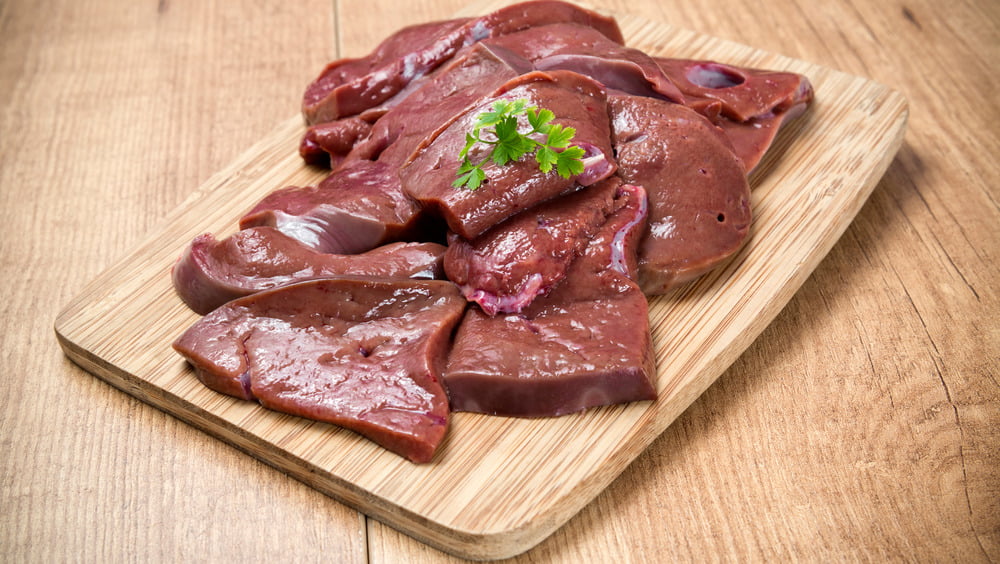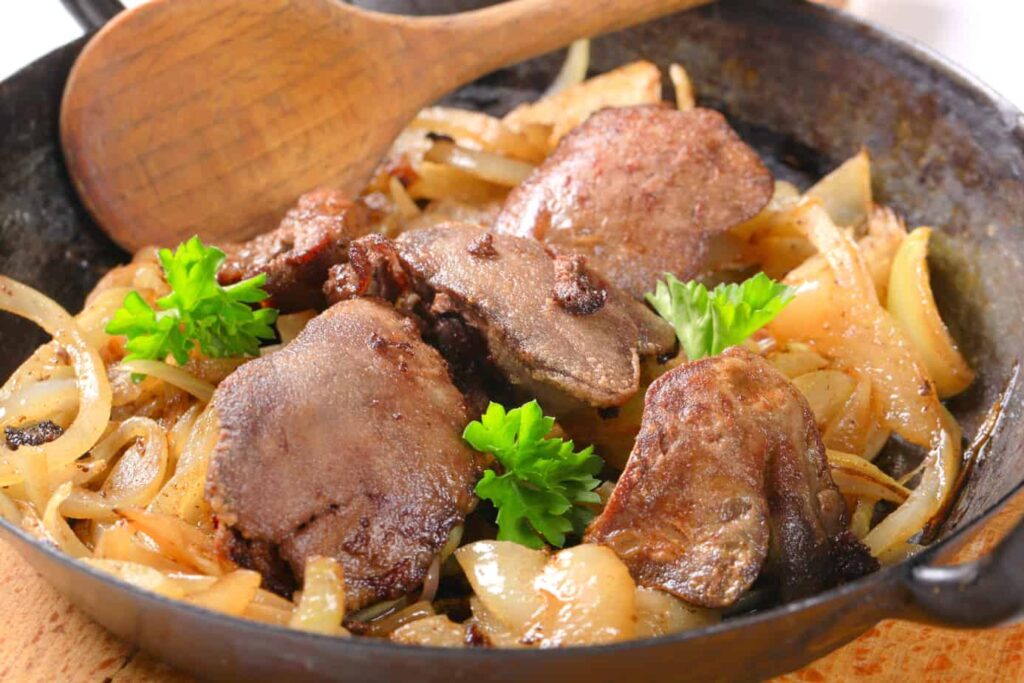How to Cook Beef Liver For Cats

As responsible cat owners, we constantly strive to provide our cat companions with a well-balanced diet that promotes their overall health and vitality. Incorporating fresh and wholesome ingredients into their meals can make a significant difference. One such nutrient-rich ingredient is beef liver. In this article, we will explore the benefits of beef liver for cats and provide detailed instructions on how to cook beef liver for cats to perfection.
Whether you’re a seasoned pet chef or new to home-cooked meals for your cat, this article will equip you with the knowledge and techniques to ensure that your pet receives the best possible nutrition from this flavorful and nutritious ingredient. Let’s explore the world of beef liver and unlock its potential as a wholesome addition to your cat’s diet.
Understanding the Nutritional Value of Beef Liver for Cats
Beef liver is an exceptional source of vitamin A, a vital nutrient for cats. Vitamin A plays a crucial role in maintaining optimal vision, supporting the health of the eyes, and promoting a robust immune system. Cats require preformed vitamin A, which they can efficiently obtain from animal sources like beef liver.
In addition to vitamin A, beef liver is packed with various B vitamins that are essential for feline health. B vitamins, including B12, riboflavin (B2), and niacin (B3), contribute to energy metabolism, ensuring that your cat has the energy they need to stay active and playful. These vitamins are also crucial for maintaining a healthy coat, as they support the production of healthy skin cells and promote a shiny and lustrous fur coat.
Moreover, beef liver is an excellent source of iron, a vital mineral for cats. Iron plays a vital role in the production of hemoglobin, the protein responsible for transporting oxygen throughout the body. Adequate iron levels are necessary to support optimal oxygenation, which is essential for your cat’s overall vitality and well-being.
By incorporating beef liver into your cat’s diet, you are providing them with a natural and nutrient-dense option that can contribute to their overall health and vitality. From supporting their vision and immune system to promoting energy metabolism and maintaining a healthy coat, the nutritional value of beef liver is unmatched. Including this organ meat in your cat’s meals can be a wonderful way to ensure they receive a variety of essential nutrients in a natural and easily digestible form.
Selecting and Preparing Beef Liver for Cats

When it comes to selecting and preparing beef liver for your cat, here are some important steps to follow:
- Choose high-quality liver: Opt for organic or grass-fed liver to ensure that you’re providing your cat with a healthier option that is free from additives or hormones. Look for liver with a vibrant color and without any signs of spoilage or unpleasant odors.
- Proper storage: Keep beef liver refrigerated at a temperature below 40°F (4°C) to maintain its freshness. If you don’t plan to use it within a few days, consider freezing it. Wrap the liver tightly in plastic wrap or place it in an airtight container before freezing to prevent freezer burn and preserve its quality.
- Rinse the liver: Before cooking, rinse the liver under cold water to remove any excess blood or impurities. This step helps ensure cleanliness and hygiene.
- Trim and cut: Trim any visible fat or connective tissue from the liver. These parts can be tough and difficult to digest for cats. Cut the liver into small, cat-friendly portions for easy handling and consumption. This step also helps to ensure that the liver cooks evenly.
By following these steps, you can ensure that the beef liver you cook for your cat is of high quality, properly stored, and prepared for their enjoyment and nutritional benefit.
Cooking Methods for Beef Liver

When it comes to cooking beef liver for your cat, there are several methods you can use, each resulting in a unique texture and flavor profile. Here are three popular methods:
1. Boiling:
- Bring a pot of water to a boil.
- Add the liver and cook for 5-10 minutes, depending on desired doneness.
- Boiling helps retain nutrients and provides a tender, moist texture.
- Ensure the liver is fully cooked to eliminate bacteria or parasites.
- Allow the liver to cool before serving.
2. Baking:
- Preheat the oven to 350°F (175°C).
- Place the liver on a baking sheet lined with parchment paper.
- Bake for 15-20 minutes.
- Season with cat-safe options like dried catnip or powdered brewer’s yeast.
- Baking provides a slightly firm texture and intensifies flavors.
- Allow the liver to cool before serving.
3. Sautéing:
- Heat a non-stick pan over medium heat and add a small amount of olive oil or butter.
- Add liver slices to the hot pan and cook for 3-5 minutes per side until browned.
- Incorporate cat-safe ingredients like finely chopped parsley or powdered cat grass.
- Sautéing offers a delightful texture and enticing aroma.
- Allow the liver to cool slightly before serving.
These cooking methods allow you to experiment and find the one that your cat enjoys the most. Ensure the liver is fully cooked to ensure safety and eliminate any potential risks. Remember to cut the cooked liver into small, bite-sized pieces for easy consumption. By preparing beef liver using these methods, you can offer your cat a variety of textures and flavors to keep mealtime exciting and enjoyable.
Safety Considerations
When cooking beef liver for your cat, prioritizing their safety is crucial. Here are some important considerations:
- Thorough cooking: Ensure that the beef liver is cooked thoroughly to eliminate any potential bacteria or parasites that may be present. Undercooked liver can pose a risk to your cat’s health. Make sure it is fully cooked before serving.
- Avoid toxic seasonings: While adding flavors to the liver may be tempting, it’s important to avoid using seasonings that are toxic to cats. Ingredients like garlic and onions can be harmful to felines. Stick to cat-safe options like dried catnip or powdered brewer’s yeast for added appeal.
- Monitor for reactions: Every cat is unique, and some may have sensitivities or allergies to certain foods, including beef liver. After introducing liver into your cat’s diet, monitor them closely for any signs of gastrointestinal distress, such as vomiting or diarrhea, or any allergic reactions like itching or swelling. If you notice any adverse reactions, it’s important to consult your veterinarian promptly.
By following these safety considerations, you can ensure that your cat’s experience with beef liver is not only delicious but also safe and free from any potential health risks. Prioritizing their well-being is essential to providing them with a nutritious and enjoyable meal.
Feeding Guidelines and Portions
When it comes to feeding beef liver to your cat, it’s important to practice moderation and ensure it is part of a balanced diet. While beef liver is nutrient-dense, it should not be the sole source of nutrition for your feline companion. Here are some guidelines to consider:
- Moderation: Use beef liver as a supplement to your cat’s regular diet rather than a primary food source. This helps ensure they receive a variety of nutrients from different sources. Incorporate beef liver into their meals a few times a week, depending on their dietary needs.
- Serving size: The appropriate serving size of beef liver depends on your cat’s weight and overall diet. As a general guideline, feed around 1-2 teaspoons of cooked beef liver per meal for an average-sized cat. Adjust the portion size based on your cat’s individual needs and consult with a veterinarian or animal nutritionist for personalized recommendations.
- Balanced diet: Remember that cats require a balanced diet that includes a mix of proteins, fats, carbohydrates, and other essential nutrients. Beef liver can be a valuable addition to their diet, but it should be complemented with other cat-friendly foods to provide a well-rounded nutritional profile.
- Professional guidance: If you have any concerns or questions about incorporating beef liver into your cat’s diet, it’s always best to consult with a veterinarian or animal nutritionist. They can provide personalized advice based on your cat’s specific needs, taking into account factors such as age, weight, activity level, and any existing health conditions.
By following these feeding guidelines and seeking professional guidance, you can ensure that your cat receives the benefits of beef liver while maintaining a balanced and nutritious diet.
Alternatives to Beef Liver
While beef liver is a nutrient-rich option for your cat, there are alternative ingredients you can consider to provide similar nutritional benefits. Here are some alternatives to beef liver:
- Chicken Liver: Chicken livers are a popular choice and can be a suitable substitute for beef liver. They are rich in essential nutrients, including vitamin A, B vitamins, and iron. Like beef liver, chicken livers should be properly cooked before serving to eliminate any potential health risks.
- White Fish: White fish, such as cod or haddock, can be a nutritious alternative to organ meats. Fish is a good source of protein and contains omega-3 fatty acids that support healthy skin and coat. It’s important to ensure the fish is thoroughly cooked and free of any bones before feeding it to your cat.
- Mackerel: Mackerel is another fish option that can provide nutritional benefits. It is rich in omega-3 fatty acids, which promote heart health and reduce inflammation. As with other fish, make sure it is cooked and free of bones before serving to your cat.
- Raw Chicken: Some cat owners choose to feed their cats a raw diet, and raw chicken can be included as part of that diet. However, it is important to approach raw feeding with caution and consult with a veterinarian or animal nutritionist to ensure that the diet is balanced and meets your cat’s nutritional requirements.
When considering alternatives to beef liver, it’s crucial to prioritize your cat’s safety and ensure proper preparation and cooking to eliminate any potential health risks. Additionally, consult with a veterinarian to determine the best dietary options for your cat based on their specific needs and health considerations.
Whether you choose beef liver, chicken liver, fish, or other alternatives, it’s important to provide a balanced and varied diet for your cat to ensure they receive all the necessary nutrients for optimal health.
Conclusion
Incorporating beef liver into your cat’s diet can offer a multitude of health benefits, thanks to its rich nutrient profile. By following the proper selection, preparation, and cooking techniques outlined in this article, you can ensure that your cat receives a nutritious and delicious meal.
Remember to prioritize their safety, consult professionals for personalized feeding recommendations, and enjoy the satisfaction of providing your feline friend with a wholesome and homemade culinary experience.



Can I incorporate veggies like peas, carrots or potatoes in liver pate for cats. What if anything can be incorporated in the pate thank you